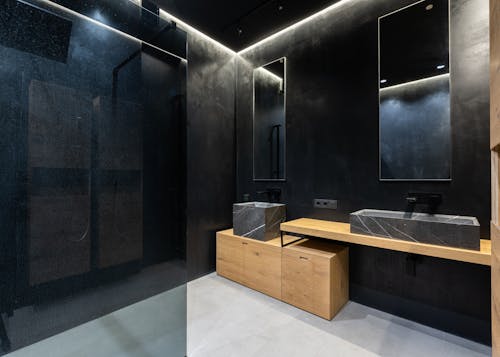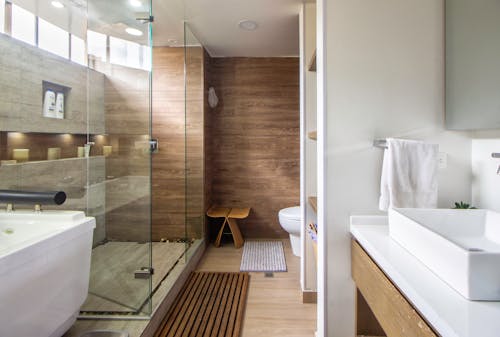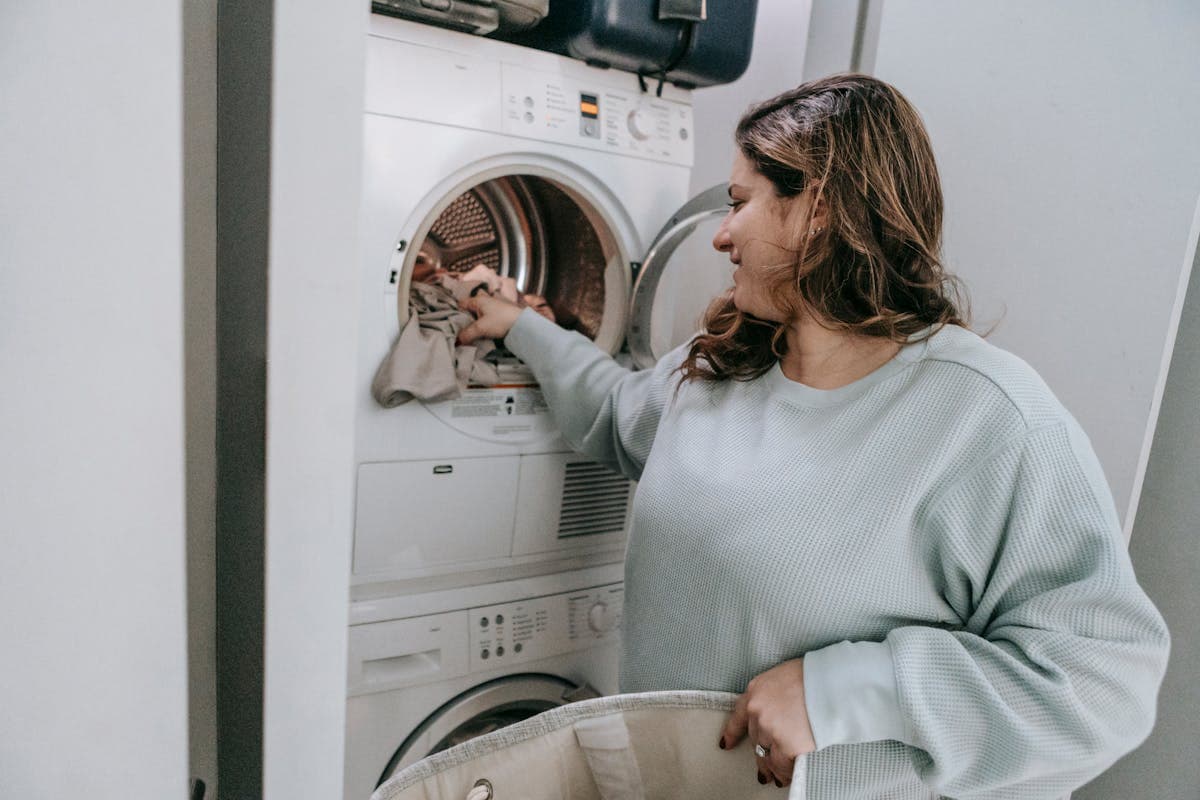Bathroom remodeling is a popular home improvement project that can transform your oasis into a luxurious and functional space.
Whether you’re looking to upgrade an outdated bathroom or create your dream ensuite, the cost of a bathroom remodel can be a significant factor in your decision-making process.
In this comprehensive guide, we’ll explore the various aspects that influence bathroom remodel costs, helping you make informed decisions and get the most value out of your investment.
Table of Contents
Factors Affecting Bathroom Remodel Cost

The cost of a bathroom remodel can vary widely depending on several factors. Here are some key elements that can impact the overall price tag:
- Bathroom Size: The square footage of your bathroom plays a significant role in the remodel cost. Larger bathrooms typically require more materials and labor, resulting in a higher overall price.
- Fixtures and Finishes: The quality and type of fixtures, such as sinks, toilets, showers, and faucets, can significantly impact the budget. Opting for high-end or custom-made items can significantly increase the cost.
- Plumbing and Electrical Work: Updating or relocating plumbing and electrical components can add substantial costs to your bathroom remodel, especially if major structural changes are required.
- Tile and Flooring: The choice of tile, flooring materials, and the complexity of the installation can significantly influence the overall remodel cost.
- Ventilation and Lighting: Improving the ventilation system and upgrading the lighting fixtures can be essential for a successful bathroom remodel, but these additions can also add to the overall expenses.
- Labor Costs: The cost of hiring professional contractors, such as plumbers, electricians, and tile installers, can vary depending on your local market and the complexity of the project.
Average Bathroom Remodel Cost
The average cost of remodeling a bathroom can vary significantly depending on the project’s size and location. Industry reports state that the national average cost of remodeling a bathroom is between $10,000 and $30,000, with the average homeowner spending about $20,000 on a mid-range renovation.
However, it’s crucial to remember that these are only estimates, and the actual cost of remodeling your bathroom may be higher or lower depending on the specific variables previously mentioned.
Different Types of Bathroom Remodels and Their Costs
When it comes to bathroom remodeling, there are several different types of projects, each with its cost implications. Here’s a breakdown of the average costs for various bathroom remodel types:
- Bathroom Renovation: This involves updating the existing fixtures, finishes, and layout without major structural changes. The average cost ranges from $5,000 to $15,000.
- Bathroom Remodel: A more comprehensive project that includes replacing major components, such as the vanity, toilet, shower/tub, and flooring. The average cost ranges from $15,000 to $25,000.
- Bathroom Addition: Adding a new bathroom to your home is a significant undertaking. The average cost for a bathroom addition ranges from $20,000 to $50,000, depending on the size and complexity of the project.
- Luxury Bathroom Remodel: For a high-end, spa-like bathroom, the costs can range from $30,000 to $75,000 or more, depending on the materials, fixtures, and custom features.
How to Plan for a Bathroom Remodel on a Budget

Achieving your dream bathroom doesn’t have to break the bank. Here are some tips to help you plan for a bathroom remodel on a budget:
- Establish a Realistic Budget: Determine how much you can comfortably afford to spend on the remodel, and stick to it. Consider setting aside a contingency fund to cover any unexpected expenses.
- Prioritize Your Needs: Make a list of the must-have features and the nice-to-have items. Focus on the essentials first, and then allocate funds for the additional upgrades.
- Explore Cost-Effective Alternatives: Look for more affordable options for fixtures, tiles, and finishes without compromising quality.
- Consider DIY Projects: Tackle some of the less complex tasks, such as painting or installing new lighting, to save on labor costs.
- Explore Financing Options: Research home equity loans, personal loans, or credit cards with low interest rates to help spread the cost of the remodel over time.
Tips for Reducing Bathroom Remodel Costs

You can use a few strategies in addition to budget preparation to control the cost of your bathroom remodel:
Stick to the Existing Layout
When it comes to keeping your bathroom remodel cost in check, one of the most impactful strategies is to minimize changes to the existing plumbing and electrical layout. While moving a sink a few inches might seem like a minor adjustment, it can trigger a domino effect on your budget. Here’s why sticking to the current layout is a champion for cost-conscious bathroom remodels:
- Reduced Demolition: Preserving the existing layout eliminates the need for extensive demolition of walls and floors to reroute pipes and electrical wiring. This translates to significant savings on labor and disposal fees, keeping your bathroom remodel cost down.
- Simplified Plumbing Work: The complexity of plumbing work directly affects the cost. By keeping the existing fixtures in their current locations, you avoid the need for rerouting pipes, installing new shutoff valves, and potentially altering the drainage system. This simplification can shave off a considerable chunk of the bathroom remodel cost.
- Electrical Efficiency: Similar to plumbing, keeping the electrical layout intact eliminates the need for rewiring the entire bathroom. Moving showers, lights, or outlets requires additional wiring, switches, and potential upgrades to the electrical panel, all of which contribute to a higher bathroom remodel cost.
- Fewer Material Needs: Sticking to the existing layout minimizes the amount of new drywall, flooring, and tiling required. When you don’t have to patch up or completely redo sections of walls and floors due to plumbing or electrical rerouting, you naturally bring down the bathroom remodel cost associated with materials.
- Faster Completion Time: One of the hidden advantages of maintaining the current layout is a potentially shorter project timeline. With less demolition and rerouting involved, the project progresses more efficiently, reducing labor costs associated with extended working days. This translates to a lower overall bathroom remodel cost.
Reuse Existing Fixtures
One of the biggest contributors to bathroom remodeling costs is the price of brand-new fixtures. While a sparkling new bathtub or a sleek, modern vanity might be part of your dream bathroom vision, there’s a way to achieve a beautiful and functional update without breaking the bank: reusing your existing fixtures.
Carefully consider the condition of your current fixtures. If they’re structurally sound and free from major damage or deep cracks, then breathing new life into them can be a fantastic strategy to save on your bathroom remodel cost. Here are two main methods for reviving your existing fixtures and reducing your bathroom remodel cost:
- Refinishing: This process involves applying a new surface to your existing fixtures, like bathtubs, sinks, and vanities. Refinishing can dramatically improve the appearance of your fixtures, allowing you to update the color, style, or even material look (e.g., transforming a dated porcelain sink into a trendy concrete-look basin). Compared to replacing the entire fixture, refinishing offers significant savings on bathroom remodel costs.
- Refacing: This technique focuses on revamping the doors and drawer fronts of your existing vanity cabinets. Refacing allows you to completely change the look and feel of your vanity without the high bathroom remodel cost of a complete replacement. You can choose from a wide variety of refacing materials, including wood, laminate, or even vinyl, to achieve the perfect aesthetic for your bathroom remodel while keeping costs down.
Choose Cost-Effective Materials
The materials you select are crucial in controlling the price tag of your bathroom renovation. Expensive finishes can provide a sense of luxury to your home, but they can also drive up costs greatly. The good news is that you don’t have to spend thousands of dollars to have a gorgeous and useful bathroom. Here’s how using smart material choices may work like a magic wand to cut money on bathroom remodels
- Mid-Range Marvels: Opt for mid-range materials for tiles, countertops, and fixtures. Mid-range options offer a fantastic balance between quality, aesthetics, and affordability. You’ll find a wide variety of styles and colors within this range, allowing you to create a bathroom that reflects your taste without sacrificing functionality.
- Embrace the Power of Builder-Grade: Builder-grade materials often get a bad rap, but they shouldn’t be overlooked. Many reputable brands offer builder-grade lines that are perfectly suitable for bathrooms, especially in terms of durability and functionality. While they might not have all the bells and whistles of high-end options, they can deliver significant savings on your bathroom remodel cost.
- Think Beyond the Expected: Explore alternatives to traditional materials. For example, consider using luxury vinyl plank flooring instead of natural stone for a beautiful and waterproof floor at a fraction of the cost. Similarly, investigate composite countertops that mimic the look of granite or quartz for a high-end aesthetic without the high-end price tag.
Explore DIY Opportunities
While a luxurious bathroom remodel is the ultimate dream, the associated bathroom remodel cost can sometimes feel like a nightmare. But before you put those spa-like visions on hold, consider the magic of DIY! Taking on some tasks yourself can significantly reduce your overall bathroom remodel cost.
Here’s where you can transform from spectator to active participant and become a bathroom remodel cost conqueror!
- Embrace the Power of Paint: A fresh coat of paint can dramatically update your bathroom’s aesthetics without a hefty price tag. Explore colors that complement your existing fixtures or create a whole new vibe. Remember, paint is relatively inexpensive and the perfect DIY project for a weekend makeover, bringing down your bathroom remodel cost.
- Caulking Like a Pro: Don’t underestimate the power of a good caulk! Caulking around bathtubs, showers, sinks, and countertops not only prevents water damage but also adds a polished touch. With some practice and the right tools, you can tackle caulking yourself, effectively reducing your bathroom remodel cost.
- Light Up Your Savings: Replacing old bathroom lighting fixtures with modern or energy-efficient options is a fantastic DIY project. Most lighting fixtures are relatively easy to install, especially with the help of online tutorials. Not only will you enjoy a brighter bathroom, but you’ll also be slashing your bathroom remodel cost by doing it yourself.
You’ll get great satisfaction from doing these tasks and save a lot of money on your total bathroom renovation. Always prioritize safety when doing plumbing and electrical work, and obtain the advice of a competent professional. However, for these simple projects, embrace your inner do-it-yourselfer and discover the secrets of affordable bathroom remodeling!
Negotiate with Contractors
Getting multiple quotes is a crucial step in keeping your bathroom remodel cost under control. But simply collecting quotes isn’t enough –– you should leverage them to negotiate and secure the best value for your project. Here’s how to approach this step effectively:
- Gather at Least 3 Quotes: Don’t settle for the first contractor you speak with. Aim to get at least 3-5 quotes from reputable, licensed professionals in your area. This allows you to compare pricing structures, materials offered, and the overall proposed approach to your bathroom remodel cost.
- Breakdown of Costs: Request a detailed breakdown of costs in each quote. This transparency helps you understand where your budget is being allocated and allows for more targeted negotiation. Look for specific line items related to labor, materials (including brands and types), permits, and waste disposal.
- Negotiate Based on Value: Once you have a good understanding of the average bathroom remodel cost in your area and a clear breakdown from each contractor, use that information to negotiate. If a quote seems high in a particular area, highlight a competitor’s quote with a more reasonable price for that specific service or material. Remember, the goal is to secure the best value, meaning a contractor who offers a competitive rate while also demonstrating expertise and a clear plan for executing your vision.
- Focus on Flexibility: Be open to discussing alternative materials or finishes that could achieve a similar look for a lower bathroom remodel cost. Many contractors can offer suggestions for cost-effective solutions that will still deliver a beautiful and functional bathroom.
- The Power of “Scope Creep”: Once the project begins, resist the urge to add on significant changes outside the agreed-upon scope of work. These last-minute additions can quickly inflate your bathroom remodel cost. If you have an idea for a change, discuss it with the contractor to understand the impact on the budget and timeline before moving forward.
By following these tips, you can leverage the power of multiple quotes and negotiation to secure the best value for your bathroom remodel cost. Remember, a successful negotiation isn’t just about getting the lowest price –– it’s about finding a contractor who understands your vision and can deliver a high-quality bathroom within your budget.
Hiring a Professional vs. DIY Bathroom Remodel
When it comes to bathroom remodeling, you have the option to either hire a professional contractor or tackle the project as a DIY endeavor. Each approach has its advantages and disadvantages:
Hiring a Professional:
- Expertise and experience in managing the entire remodel process
- Ensures compliance with building codes and regulations
- Provides warranties and guarantees on the work performed
- Can handle complex tasks, such as plumbing and electrical work
- May have access to wholesale pricing on materials and fixtures
DIY Bathroom Remodel:
- Potential cost savings by completing the work yourself
- Allows for customization and personalization
- Provides a sense of accomplishment and personal investment
- Requires significant time, effort, and skills to complete the project
- Risks of making mistakes or not meeting building code requirements
Ultimately, the decision to hire a professional or go the DIY route will depend on your skills, the complexity of the project, and your personal preferences.
Hidden Costs to Consider During a Bathroom Remodel
While planning your bathroom remodel, it’s essential to be aware of potential hidden costs that can quickly add up and impact your overall budget. These include:
- Structural Repairs: If your bathroom has any underlying issues, such as water damage or mold, these will need to be addressed before the remodel can begin, adding to the overall cost.
- Permit Fees: Depending on your local regulations, you may need to obtain permits for the remodel, which can range from a few hundred to a few thousand dollars.
- Disposal and Cleanup: Removing and disposing of old fixtures, tiles, and other materials can incur additional costs, especially if hazardous materials are involved.
- Unforeseen Complications: During the remodeling process, you may encounter unexpected issues, such as outdated or faulty plumbing or electrical systems, which can result in additional expenses.
- Temporary Living Arrangements: If your bathroom is the only one in your home, you may need to factor in the cost of temporary living arrangements during the remodel.
By anticipating and budgeting for these hidden costs, you can better manage your overall bathroom remodel expenses.
Popular Trends in Bathroom Remodeling

As homeowners seek to create their dream bathrooms, certain trends have emerged in the world of bathroom remodeling. Some of the popular trends include:
- Spa-like Retreats: Homeowners are increasingly opting for luxurious, spa-inspired bathrooms with features like freestanding tubs, rainfall showers, and indulgent vanities.
- Smart Technology: The integration of smart home technology, such as voice-activated faucets, touchless toilets, and built-in speakers, is becoming more prevalent in bathroom remodels.
- Minimalist Design: Clean lines, neutral color palettes, and a focus on functionality are hallmarks of the minimalist bathroom trend.
- Sustainable and Eco-friendly Materials: Homeowners are prioritizing the use of environmentally friendly materials, such as bamboo, recycled glass, and low-flow fixtures, to reduce their carbon footprint.
- Aging-in-Place Features: With an increasing emphasis on universal design, bathroom remodels are incorporating features like curbless showers, ADA-compliant vanities, and grab bars to accommodate aging homeowners.
By staying informed about these trends, you can incorporate elements that align with your personal style and lifestyle preferences, ultimately creating a bathroom that meets your unique needs.
Conclusion
Although remodeling a bathroom can be very expensive, you can design the bathroom of your dreams without going over budget if you plan ahead and make wise decisions. Making the most of your bathroom makeover budget will enable you to turn your haven into a gorgeous, useful, and reasonably priced area. Start by learning what influences the final cost and studying cost-saving options. Are you prepared to start building your ideal bathroom? Get in touch with our tea.
How much does a bathroom remodel cost?
The average bathroom remodel cost in the US ranges from $10,000 to $25,000, with simple refreshes starting at $2,500 and high-end remodels exceeding $30,000. The final cost depends on factors like size, scope, materials, labor, and location.
What are the biggest cost drivers in a bathroom remodel?
The size of the bathroom, the scope of the project, the choice of materials and finishes, and labor costs are the main factors influencing the overall cost of a bathroom remodel.
How can I save money on my bathroom remodel?
Setting a realistic budget, comparing quotes from multiple contractors, choosing mid-range materials, doing some of the work yourself, and considering a simple refresh instead of a full gut renovation can help you save money on your bathroom remodel.
What financing options are available for a bathroom remodel?
Home equity loans, personal loans, and credit cards are common financing options for bathroom remodels. Choosing the best option depends on your financial situation and creditworthiness.
Where can I find more information about bathroom remodel costs?
Online resources like home improvement websites, design blogs, and contractor websites offer valuable information and cost calculators to help you estimate your bathroom remodel costs.

